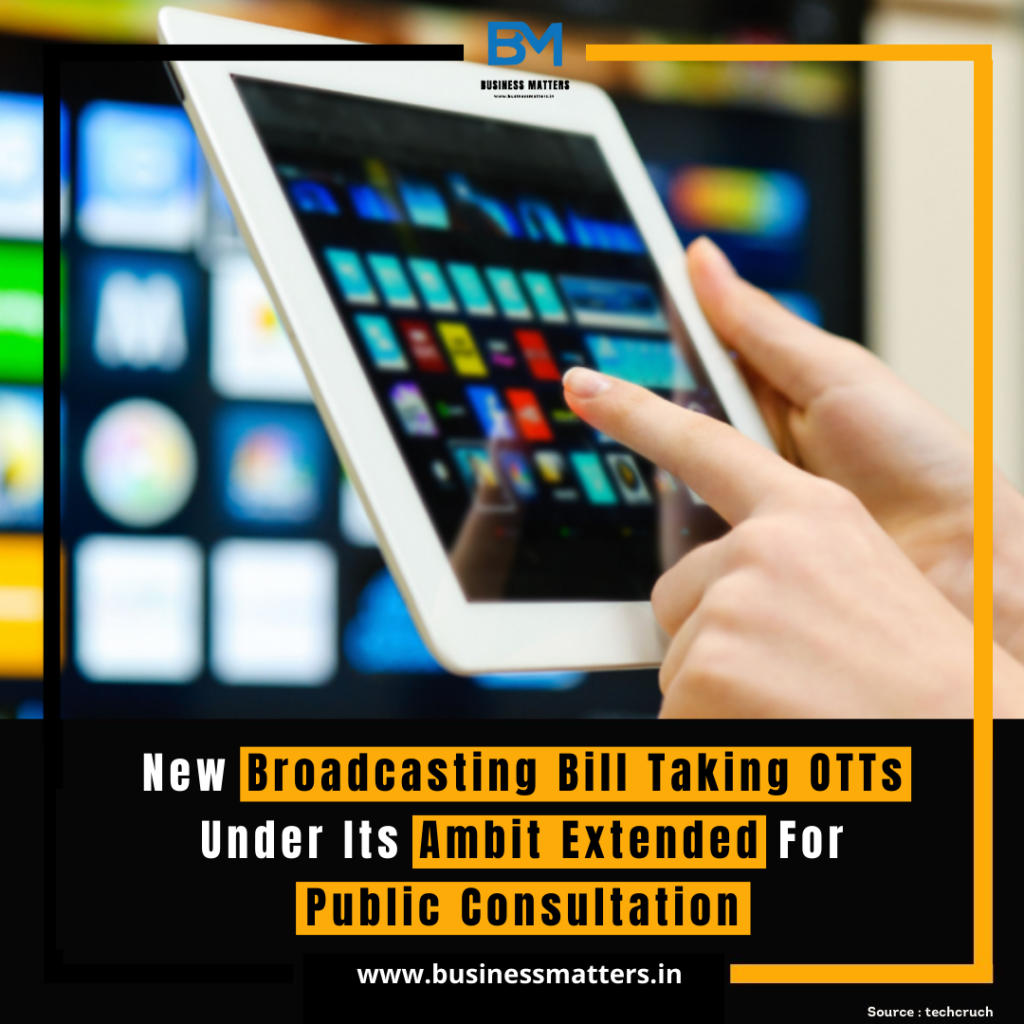In a significant development in the media and entertainment sector, the government has proposed a new broadcasting bill that brings Over-The-Top (OTT) platforms under its regulatory ambit. The bill, currently in the early stages of development, has been extended for public consultation, marking a crucial step toward shaping the future of content streaming services in the country.
Overview of the Bill:
The proposed broadcasting bill aims to address the evolving landscape of media consumption by expanding the regulatory framework to cover OTT platforms. These platforms, which deliver content over the internet without the need for traditional cable or satellite subscriptions, have witnessed a surge in popularity in recent years.
Key Provisions:
The bill is expected to introduce key provisions to govern OTT platforms, ensuring a level playing field with traditional broadcasters. Some of the anticipated provisions include content classification, age-appropriate content labeling, and mechanisms to address viewer complaints. Additionally, the bill may outline guidelines for advertisements and promotional content on OTT platforms.
Public Consultation Process:
The decision to open the bill for public consultation underscores the government’s commitment to a transparent and inclusive regulatory framework. During this period, stakeholders, including industry experts, content creators, and the general public, are encouraged to provide feedback and suggestions. The public consultation process is a crucial aspect of democratic governance, allowing diverse perspectives to shape the final legislation.
Impact on the Industry:
The inclusion of OTTs in the broadcasting bill is likely to have a profound impact on the industry. Content creators and platform operators may need to adapt their strategies to comply with the new regulations. Simultaneously, consumers can expect a more standardized viewing experience with enhanced content categorization and age-appropriate warnings.
Challenges and Opportunities:
While the proposed bill presents challenges for OTT platforms, it also opens up opportunities for growth and innovation. Regulatory clarity can instill confidence among investors and advertisers, leading to increased investment in quality content production. The industry, in collaboration with regulatory bodies, has the chance to establish a framework that nurtures creativity while safeguarding viewer interests.
Global Perspectives:
It is essential to consider global trends in content regulation while shaping the bill. Many countries have grappled with finding the right balance between freedom of expression and responsible content dissemination. Comparative analysis with international models can offer insights into effective regulatory practices that cater to the dynamic nature of the digital media landscape.
Conclusion:
The extension of the new broadcasting bill for public consultation signifies a crucial juncture in the evolution of media regulation. As the industry and the public actively engage in shaping the future of OTT platforms, the outcome of this process will undoubtedly shape the trajectory of the media and entertainment sector in the country. The government’s commitment to transparency and inclusivity in policymaking sets a positive precedent for collaborative efforts in navigating the complexities of the digital era.


